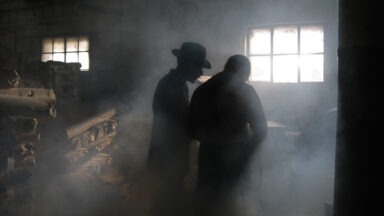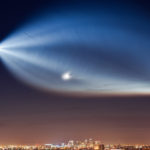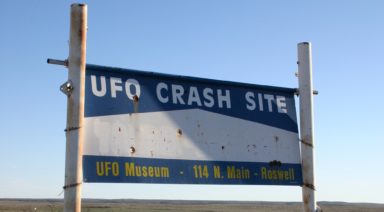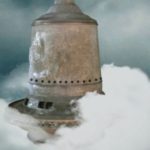A 12-Year-Old Boy is Youngest Person to Achieve Nuclear Fusion
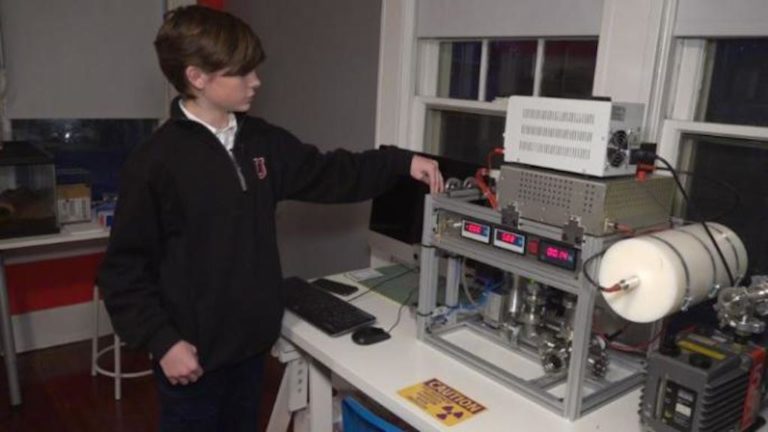
Jackson Oswalt has become the youngest person to achieve nuclear fusion at the age of 12 years old. Through trial and error, and $10,000 of equipment purchased on the internet, Oswalt built a homemade nuclear fusion reactor in his room, baffling his parents and members of the scientific community.
Though now age 14, experiments Oswalt conducted two years ago were verified by the internet hobbyist group, Open Source Fusor Research Consortium (OSFRC). He beat out the previous record holder, Taylor Wilson, who performed the feat at age 14.
“The start of the process was just learning about what other people had done with their fusion reactors,” Jackson said in an interview with Fox News. “After that, I assembled a list of parts I needed. I got those parts off eBay primarily and then oftentimes the parts that I managed to scrounge off of eBay weren’t exactly what I needed. So, I’d have to modify them to be able to do what I needed to do for my project.”
Hailing from Memphis, Tenn., Oswalt said he decided he didn’t want to waste his time on video games or other typical adolescent activities, instead finding himself enamored with science and, more specifically, nuclear physics.
After reading about his predecessor, Oswalt decided he could beat Wilson’s record and began researching the gear he would need to build a high-volt, atom smashing, plasma reactor in his bedroom.
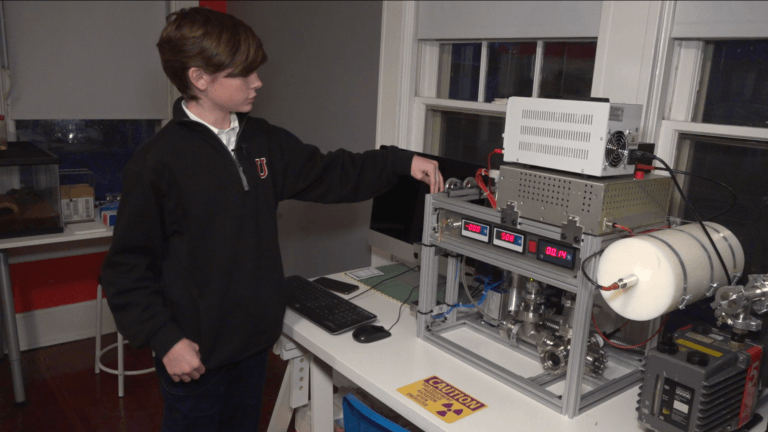
Jackson Oswalt next to his nuclear fusion reactor via FoxNews.com
Combing through the OSFRC’s online forums and working under the supervision of his dad, Oswalt built a 50,000 volt reactor in about a year, achieving the desired results of his experiment just hours before his 13th birthday.
Nuclear fusion is the same reaction that powers our sun and other stars, but on a much larger scale. In theory, a successful nuclear reactor could provide clean, unlimited energy to the world eliminating our reliance on finite fossil fuels that pollute the planet. Some believe this technology has already been realized and suppressed at the behest of corporate interests in oil and gas.
If a 12-year-old kid can create a nuclear fusion reactor in his room, why can’t the most advanced energy facilities in the world create one on a larger scale?
The trick to achieving successful fusion is to build a reactor that outputs more energy than is put in, and scientists at MIT have come close to building such a mechanism. In 2016, the university’s Alcator C-Mod tokamak reactor achieved a 16 percent increase from a 2005 record when it reached a temperature of 35 million Celsius for a period of two seconds. Though conveniently, funding for the reactor from the US Department of Energy ended the following day, despite their success.
More recently, scientists have begun to construct a larger tokamak reactor, which uses a toroidal apparatus to produce fusion in plasma, in southern France. This reactor will be 800 times the size of MIT’s Alcator C-mod reactor, but won’t be complete for another 15 to 20 years.
And while several other private firms are working on similar tokamak reactors of their own, its surprising there isn’t more government investment in this technology when it portends a future of clean limitless energy.
Is this because it’s actively being suppressed?
For more on suppressed technology check out Disclosure with Dr. Steven Greer:
Amazon Alexa Owners Reporting Creepy Laughter from Home Assistant

Amazon’s Alexa is becoming sentient and she finds our meager, mortal lives pathetically amusing. At least that’s what many owners thought recently as they quickly pulled the plug on their seemingly benign home assistants when they started sporadically laughing at them unprompted.
Amazon released a statement saying, “in rare circumstances, Alexa can mistakenly hear the phrase, ‘Alexa, laugh.’” The company quickly issued an update to change the phrase to “Alexa, can you laugh?”
In most cases, the unsettling chuckle is simply the result of a misconstrued command. Phrases like, “Alexa, replay,” or “Alexa, play the last sound,” were probably misheard as “Alexa, play the laugh sound.” But in other cases, Alexa chortles without any command, and in one case, a Reddit user reported there was no indication on the app that the device heard any command.






